Victorian Antique Sighting Compass Elliott Brothers Strand London c1854 1865

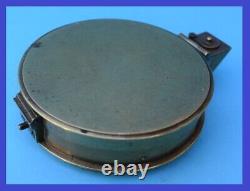



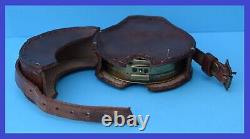
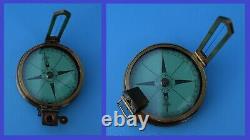


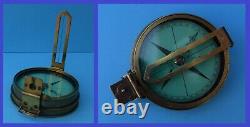

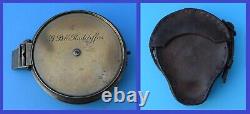

It is of brass construction with a pale green rotating card dial marked with the points of the compass, and all set under a lead crystal glass. The compass is bound in a leather case, and although not original this case has been hand crafted to meet the same dimensions and style as the original case. Age / Provenance; there is no date stamp on this compass, however an internet search has revealed that the Elliott Brothers of The Strand London, made this instrument between 1854 and 1865. The compass has been in my position for 50 Years and I presume was originally made for a gentleman by the name of G.
Radcliffe, which is the name inscribed on the base of the compass body. A further internet search has not revealed any information on this name. Principal of Operation; with the cover removed, the sighting arm is raised 90 degrees to the base plate. A hinged refractor lens is then unclipped and positioned over the base plate, to enable a compass bearing to be eventually taken.
With the compass held flat, a notch on the refractor body is aligned with the'horse hair' on the sighting arm. A compass reading may now be taken through the refractor lens, and the rotating compass base plate may be held in position via the locking pin, located at the base of the sighting arm. Condition; all of the parts of the compass are present and in clean condition. The compass base plate rotates freely on its axis, the lead glass is free of scratches and the brass body is in good order. It is a beautiful tactile object, and still looking good after 160 Years. FREE Post within the United Kingdom - Thank You for Looking. This item is in the category "Antiques\Science/Medicine\Scientific Instruments".The seller is "nigel-john" and is located in this country: GB. This item can be shipped to United Kingdom.
- Period: 1800 to 1900
- Type: Compass
- Material: Brass

